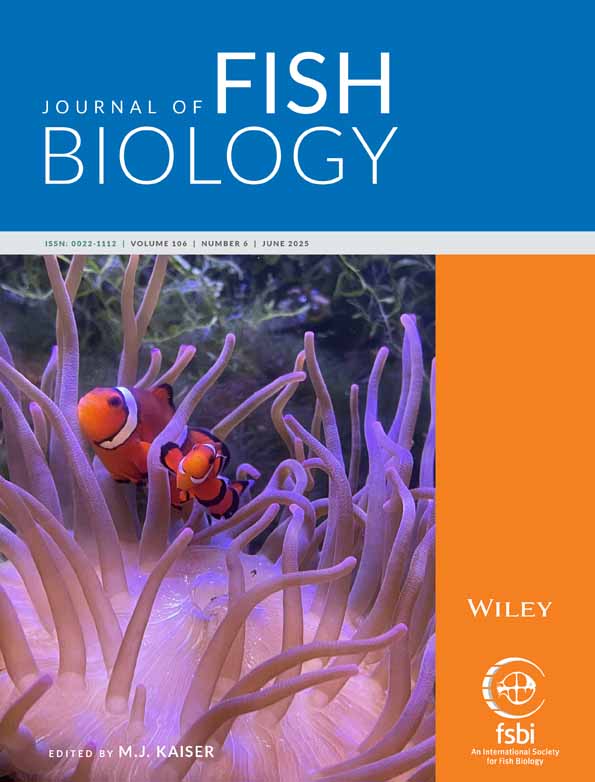The effect of temperature on the ability of Tilapia mossambica Peters to enter deep water
Abstract
The ability of adult Tilapia mossambica Peters to enter deep water was determined at 15, 22 and 30°C. At 30°C adults compensate to about 20m depth but at 15°C to only 7 m. Compensation is more rapid at high than at low temperatures. T. mossambica haemoglobin has a marked Root effect which is the same at 22 and 30°C. The oxygen affinity of the haemoglobin is higher at 15°C than at 30°C. There was no measurable difference in the rate of passive oxygen diffusion across the swimbladder wall in the temperature range 15–30°C. It is concluded that the ability to enter deeper water at higher temperatures is related to decreased oxygen affinity of the haemoglobin and higher rates of oxygen secretion and blood circulation.




